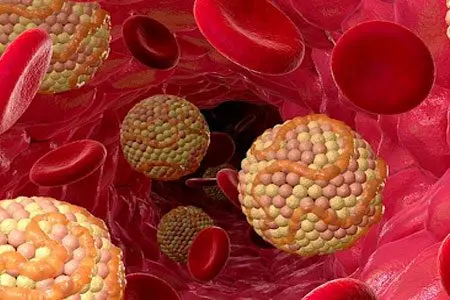Contents

Lipids are organic compounds found in most living organisms. Simple lipids are represented by alcohols and bile acids, and complex lipid molecules include various compounds and atoms.
For humans, lipids are very important. They are present in food, are found in the composition of medicines, they are actively used in various industrial sectors. Lipids are present in all cells of the human body. Derived from food, they are a source of energy.
Lipids vs Fats – What’s the difference?
Translated from Greek, “lipids” means “fat”, but these 2 concepts should not be confused. Fats are only certain types of lipids, but in general they are represented by a fairly wide group of substances. Fats are triglycerides that are made up of glycerol and carboxylic acids. They, along with lipids, are of great importance for the human body.
Why does the body need lipids?

There are no tissues in the body that do not contain lipids. They are an integral part of every cell, because without them it would not be able to function normally. There are many lipids in the human body, but each smallest molecule performs its function.
Biochemical processes that cannot do without the participation of lipids:
Energy production.
Cell division.
Hematopoiesis, the formation of hormones.
Protection of internal organs, their stability.
Cell respiration.
Transmission of nerve signals and more.
Most lipids enter the body from the outside, with food. He assimilates them and produces new molecules necessary for normal functioning.
What are the functions of lipids in the body?
The functions of lipids in our body depend on their structure and in which organ they are located. Lipids “work” in every cell, so that the body can exist normally.
The main biological functions of lipids:
Energy.
Reserve.
Structural.
Enzymatic.
Regulatory.
Signal.
Water repellent.
Thermal insulation.
Energy
When lipids break down, energy is released. It is used by cells to ensure their own life: they breathe, grow, divide, produce certain substances.
Lipids enter the cytoplasm of the cell with the blood stream. When a cell needs to replenish its own energy, it breaks them down and feeds on the released energy.
The storing
This function is also called a backup. Each cell stores energy in case a power failure occurs. Energy is stored in it in the form of fats. Adipocytes are responsible for this, which for the most part consist of a drop of fat. Adipocytes represent all adipose tissue in the body. Their maximum accumulation is observed in the subcutaneous fat and in the abdominal cavity. If the body does not receive nutrition, then adipocytes disintegrate, acting as an energy source.
Lipids in the subcutaneous fat are responsible for the thermal insulation of the body. The more their accumulation, the worse these tissues conduct heat. As a result, the body has the ability to maintain a constant body temperature, does not quickly cool down and does not overheat.
Structure
Lipids form a double layer of the cell wall, due to which it has the ability to function and take part in metabolic processes. Each molecule that forms this wall has two parts: one is in contact with water (hydrophilic) and the other is not (hydrophobic). Those surfaces of the molecules that interact with the liquid are turned outward, and the hydrophobic ones, on the contrary, are turned inward, practically touching each other. Thus, a double layer is formed, in the thickness of which other substances, such as carbohydrates or proteins, can be located.
The absence of lipids in the cell wall would cause it to simply lose its shape and proper structure.
Enzymatic
Lipids are not part of enzymes, but without the participation of fat fractions, they cannot be formed.
Lipids play an important role in the process of food digestion. For example, bile contains a significant amount of phospholipids and cholesterol. They help neutralize excess pancreatic enzymes so they can’t harm the intestines. Lipids from food are dissolved in bile, due to the action of phospholipids.
As a result, it turns out that lipids themselves are not enzymes, but take an active part in their work. Without them, the normal functioning of the digestive system is impossible.
Regulatory
This function for lipids is not the main one. Directly from the blood, they do not have a direct effect on various processes. At the same time, lipids are an integral part of the substances that are responsible for regulating these processes. First of all, we are talking about adrenal hormones and sex hormones. Without them, the functioning of the immune system, normal metabolism, and even the growth and development of the body as a whole are impossible.
Lipids are found in prostaglandins, which are produced in response to inflammation and also affect some functions of the nervous system.
So, lipids do not directly affect the regulatory function, but their deficiency will lead to numerous malfunctions in the body.
Signal
Some complex lipids are responsible for the signaling function. This is necessary for the normal course of most processes in the body. Thus, glycolipids contained in neurons ensure the normal transmission of nerve impulses. Moreover, lipids are involved in signaling inside the cell. They help her identify substances brought in with the bloodstream and pass them through the membrane.
Water repellent
The skin, wool and feathers have a layer of wax that keeps them supple and protects them from moisture. Such a layer of wax is also found on the leaves and fruits of various plants.
Thermal insulation
Fats have low thermal conductivity, so the resulting layer retains heat, which allows animals to live in cold climates. In many animals living in a cold environment, it is deposited in significant quantities. For example, the subcutaneous fat of a whale can reach 1 meter.









